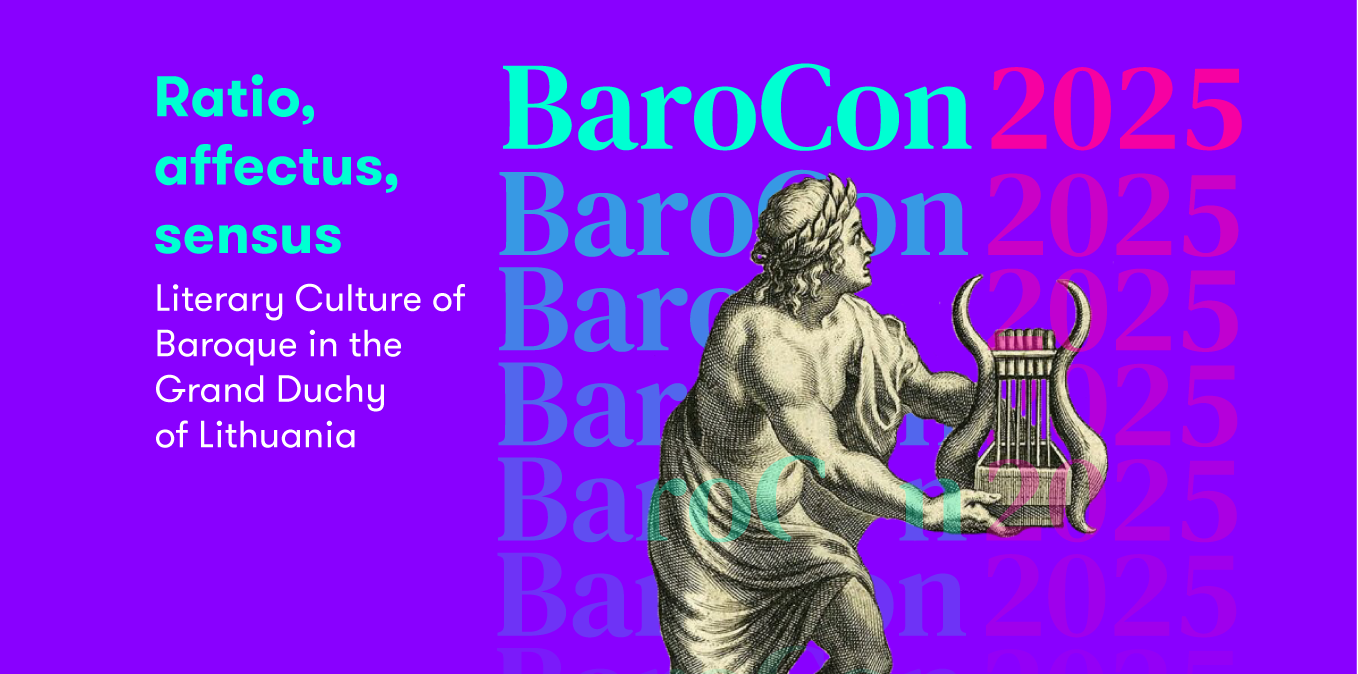Ratio, affectus, sensus: Literary Culture of the Baroque in the Grand Duchy of Lithuania
In 2025, we will commemorate the 400th anniversary of the first publication of Matheus Casimirus Sarbievius' most famous Latin poetry collection 'Lyricorum libri tres' (1625). This has led to 2025 being declared the Year of Baroque Literature in Lithuania. The eminent Jesuit neo-Latin poet of the Polish-Lithuanian Commonwealth, Sarbievius, has been hailed as the Christian Horace and the Sarmatian Horace. His theoretical thoughts on poetry and rhetoric are still highly regarded and have inspired new research on other concurrent themes and authors. This anniversary provides an opportunity to explore the extent and diversity of Baroque literary culture, which has seen a surge of interest in recent decades, both in the academic world and in popular culture. Therefore, the Institute of Lithuanian Literature and Folklore, together with the Faculty of Philology of Vilnius University, is organising an international academic conference "Ratio, affectus, sensus: Literary Culture of the Baroque in the Grand Duchy of Lithuania" on 25-27 September 2025 in the baroque city of Vilnius.
The aim of the multidisciplinary conference is to stimulate discussion on the literary culture of the "long seventeenth century" (from the end of the 16th century to the middle of the 18th century) in the Grand Duchy of Lithuania. This historical period, associated with dramatic changes and a general cultural crisis, is often described in contradictory terms and in constant tension between reason and senses, rigid structure and passions, classifications and impressions, etc. By embracing this contradiction, we invite an exploration of the theme in question through the lens of this dynamic interplay between reason (ratio), emotion (affectus) and the senses (sensus), which can be perceived in various genres of the period, such as poetry, biography, hagiography, rhetoric, private and public correspondence, and so on. The importance of the modern approach lies not only in what it can reveal about the Baroque in the Grand Duchy of Lithuania, but also about subsequent and contemporary literary culture, as scholars have demonstrated the continuing influence of a 'Baroque spirit'.
Event location
25–26 September the conference will take place at V. Krėvė (118) auditorium, Faculty of Philology
27 September the conference will take place at the Church Heritage Museum, Šv. Mykolo g. 9 (entrance from Maironio g. "Arkangelo konferencijų centras")
Keynote speakers

Ona Dilytė-Čiurinskienė
Senior Researcher, The Institute of Lithuanian Literature and Folklore
Prof Stephen Harrison
Professor of Latin literature, University of Oxford
Olena Matushek
The Practice of Acumen in the Sermons of Lazar Baranovych
Olena Matushek
Karazin Kharkiv National University
The Practice of Acumen in the Sermons of Lazar Baranovych
Keywords: wittiness, Baroque sermon, Lazar Baranovych, Vilnius Academy, Kyiv-Mohyla College
The object of the presentation is the sermons of Archbishop Lazar Baranovych of Chernihiv and Novgorod-Sivers’kyі from his collections. The research aims to identify the artistic functions of acumen in the sermons of Baranovych by using discursive and semiotic methods of analysis. The task of the presentation is to show where Baranovych studied the science of acumen and how he created concepts. Maciej Sarbiewski presents several general ways of creating a concept. Summarizing his teachings, Renate Lachmann names three of them: it compares a case to a topos; two topoi of the same order; and two topoi of different orders. Lazar Baranovych often resorted to extensive analogies. He compared two typologically similar situations—the Transfiguration of the Lord on Tabor and His Crucifixion on Calvary—contrasting the portrait characteristics of the main image. The text of the Great Friday sermon is based on the parallel and contrast between the First Adam and Christ (the Second Adam).
Lazar Baranovych often turned a topic into a sentence with a witty rhetorical question. Names were also a source of wittiness. Using the deep symbolic meaning of the name 'Jacob', Baranovych denotes the church. The bishop used linguistic witticisms not only in printed texts but also in live communication. When Dymytriy Tuptalo came to him for a blessing to become hegumen, Lazar Baranovych greeted him with a pun: 'Let Dymytriy get a miter!' Thus, the theory of mental acuity helped Lazar Baranovych to express the content of Christian dogmas, interpret gospel plots, and interest listeners with unexpected similarities and contrasts. The linguistic and stylistic design of the content of Baranovych's sermons corresponded to the features of the European Baroque style based on wittiness.


